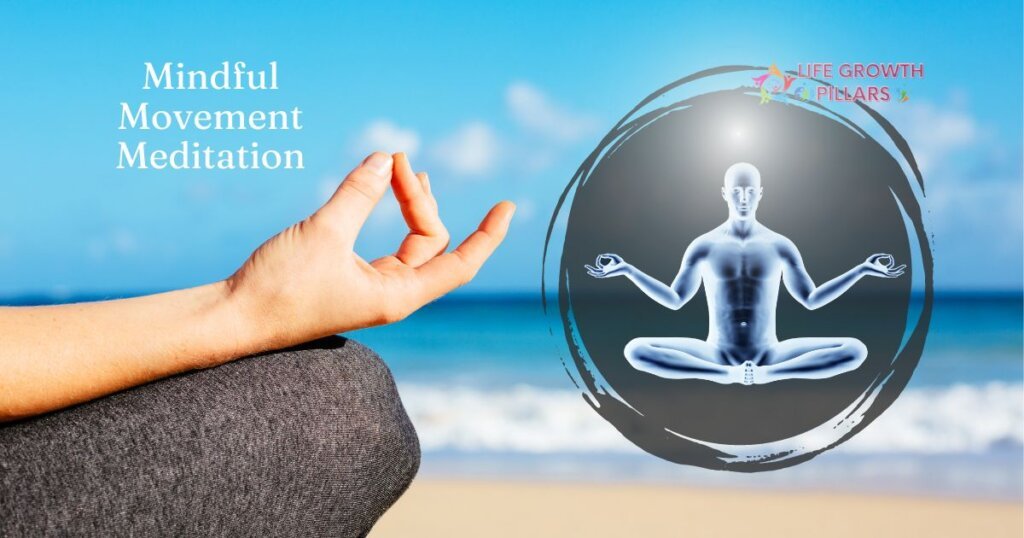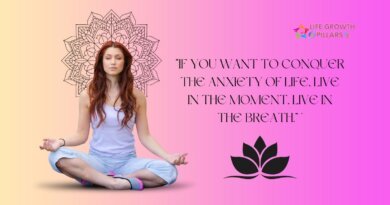Mindful Movement Meditation: Serene Steps For Inner Peace
In the whirlwind of daily life, serenity often slips through our fingers like grains of sand. However, through the practice of mindful movement meditation, you can cultivate a sense of inner calm and serenity amidst the chaos of daily life. In this comprehensive guide, we will explore the principles of mindful movement meditation, its benefits, and how you can incorporate it into your own life to experience greater peace and harmony.

Understanding Mindful Movement Meditation
Mindful movement meditation is a practice that combines the principles of mindfulness with gentle movement exercises. Unlike traditional seated meditation, which focuses on stillness and breath awareness, mindful movement meditation involves moving the body in a deliberate and mindful manner.
The Essence Of Mindful Movement
At its core, mindful movement meditation encourages practitioners to bring their full attention to the present moment as they engage in simple movements such as walking, stretching, or yoga. By focusing on the sensations of the body and the rhythm of movement, individuals can cultivate a deeper awareness of themselves and their surroundings.
Benefits Of Mindful Movement Meditation
The benefits of mindful movement meditation are vast and far-reaching. From reducing stress and anxiety to improving physical health and emotional well-being, this practice offers numerous advantages for those who incorporate it into their daily lives.
1. Stress Reduction
One of the primary benefits of mindful movement meditation is its ability to reduce stress levels. By engaging in gentle movement and focusing on the present moment, individuals can alleviate tension and promote relaxation throughout the body and mind.
2. Increased Mindfulness
Mindful movement meditation is an excellent way to enhance mindfulness, or the ability to be fully present and aware of each moment. By practicing mindfulness during movement, individuals can develop a greater sense of clarity, focus, and attention in their everyday lives.
3. Improved Physical Health
In addition to its mental and emotional benefits, mindful movement meditation can also have positive effects on physical health. Regular mindfulness practice has been shown to improve flexibility, balance, and coordination, as well as reduce the risk of chronic diseases such as heart disease and diabetes.

How To Practice Mindful Movement Meditation
Practicing mindful movement meditation is simple and accessible to people of all ages and fitness levels. Ready to jumpstart? Follow these steps.
1. Find A Quiet Space
Choose a quiet and peaceful environment where you can move freely without distractions. This could be a corner of your home, a local park, or a quiet room at your workplace.
2. Begin With Breath Awareness
Take a few moments to focus on your breath, allowing it to become slow, deep, and rhythmic. Use your breath as an anchor to bring your attention into the present moment.
3. Engage In Gentle Movement
Start with simple movements such as walking, stretching, or gentle yoga poses. Pay close attention to the sensations of your body as you move, noticing any areas of tension or discomfort.
4. Stay Present
Throughout your practice, continue to bring your attention back to the present moment whenever your mind begins to wander. Notice the sights, sounds, and sensations around you without judgment or attachment.
The Science Behind Mindful Movement
How Mindful Movement Affects The Brain
Research has shown that mindful movement meditation can have profound effects on the brain. By engaging in intentional movement combined with mindfulness practices, individuals can experience changes in brain structure and function that support greater emotional regulation, cognitive flexibility, and resilience to stress.
The Role Of Neuroplasticity
Neuroplasticity, or the brain’s ability to reorganize and adapt in response to experience, plays a key role in the benefits of mindful movement meditation. Through regular practice, individuals can strengthen neural pathways associated with attention, awareness, and emotional regulation, leading to lasting changes in behavior and well-being.
Tips For Enhancing Your Mindful Movement Practice
Set Intentions
Before beginning your mindful movement practice, take a moment to set intentions for your session. What do you hope to cultivate or explore? Whether it’s finding peace, increasing flexibility, or simply enjoying the present moment, clarifying your intentions can enhance the effectiveness of your practice.
Experiment With Different Modalities
There are countless ways to engage in mindful movement meditation, from walking meditation to tai chi to dance. Experiment with different modalities to find what resonates most with you. Remember, there is no one-size-fits-all approach, so trust your intuition and explore with an open mind.
Incorporate Mindful Movement Into Daily Activities
Mindful movement doesn’t have to be limited to formal meditation sessions. Look for opportunities to incorporate movement and mindfulness into your daily activities, such as taking mindful walks, practicing mindful eating, or integrating gentle stretches into your routine.
Overcoming Common Challenges
Dealing With Distractions
It’s natural for distractions to arise during mindful movement meditation, whether it’s external noises, wandering thoughts, or physical discomfort. Instead of trying to suppress or avoid distractions, acknowledge them with kindness and gently redirect your attention back to the present moment.
Patience And Persistence
Like any skill, mindful movement meditation takes time and practice to master. Be patient with yourself and embrace the process, knowing that each moment of awareness is a step toward greater peace and clarity. Remember, there is no “right” or “wrong” way to practice—simply showing up with curiosity and compassion is enough.

Conclusion
In conclusion, mindful movement meditation offers a powerful pathway to inner peace and serenity in our hectic modern world. By incorporating gentle movement and mindfulness into our daily lives, we can reduce stress, increase self-awareness, and improve our overall well-being. Whether you’re new to meditation or a seasoned practitioner, consider exploring the transformative benefits of mindful movement meditation for yourself.
Frequently Asked Questions
Q1. What exactly is mindful movement meditation?
A. Mindful movement meditation is a practice that combines gentle movement exercises with mindfulness techniques. It involves bringing full attention to the present moment while engaging in movements such as walking, stretching, or yoga.
Q2. How does mindful movement differ from traditional meditation?
A. While traditional meditation typically involves seated practice and focus on the breath, mindful movement incorporates movement as a way to cultivate mindfulness. Both practices aim to increase present moment awareness and reduce stress, but mindful movement adds a physical component.
Q3. Can anyone practice mindful movement meditation?
A. Yes, mindful movement meditation is accessible to people of all ages and fitness levels. It can be adapted to individual needs and preferences, making it suitable for beginners and experienced practitioners alike.
Q4. What are the benefits of mindful movement meditation?
A. Mindful movement meditation offers a wide range of benefits, including stress reduction, increased mindfulness, improved physical health, enhanced emotional well-being, and greater overall sense of peace and calm.
Q5. How often should I practice mindful movement meditation?
A. There’s no one-size-fits-all answer to how often you should practice – it’s all about what works best for you and your busy life. Some people may benefit from daily practice, while others may find success with less frequent sessions. The key is consistency and finding a rhythm that works for you.
Q6. Can I combine mindful movement meditation with other forms of meditation?
A. Absolutely! Mindful movement meditation can complement other forms of meditation such as seated meditation, loving-kindness meditation, or body scan meditation. Experiment with different techniques to find what combination works best for you.
Q7. What if I have physical limitations or disabilities?
A. Mindful movement meditation can be adapted to accommodate physical limitations or disabilities. There are many variations and modifications available, including seated movements, gentle chair yoga, and mindfulness practices that focus on breath and internal sensations.
Final Thoughts
Mindful movement meditation is a powerful practice for cultivating inner peace, presence, and well-being. By combining gentle movement with mindfulness techniques, we can access a deeper connection to ourselves and the world around us. Whether you’re new to meditation or a seasoned practitioner, consider incorporating mindful movement into your daily life and experience the transformative benefits for yourself. Remember, the journey of mindful movement is not about perfection but about showing up with curiosity, compassion, and an open heart. May each mindful step bring you closer to a life of joy, balance, and serenity.



